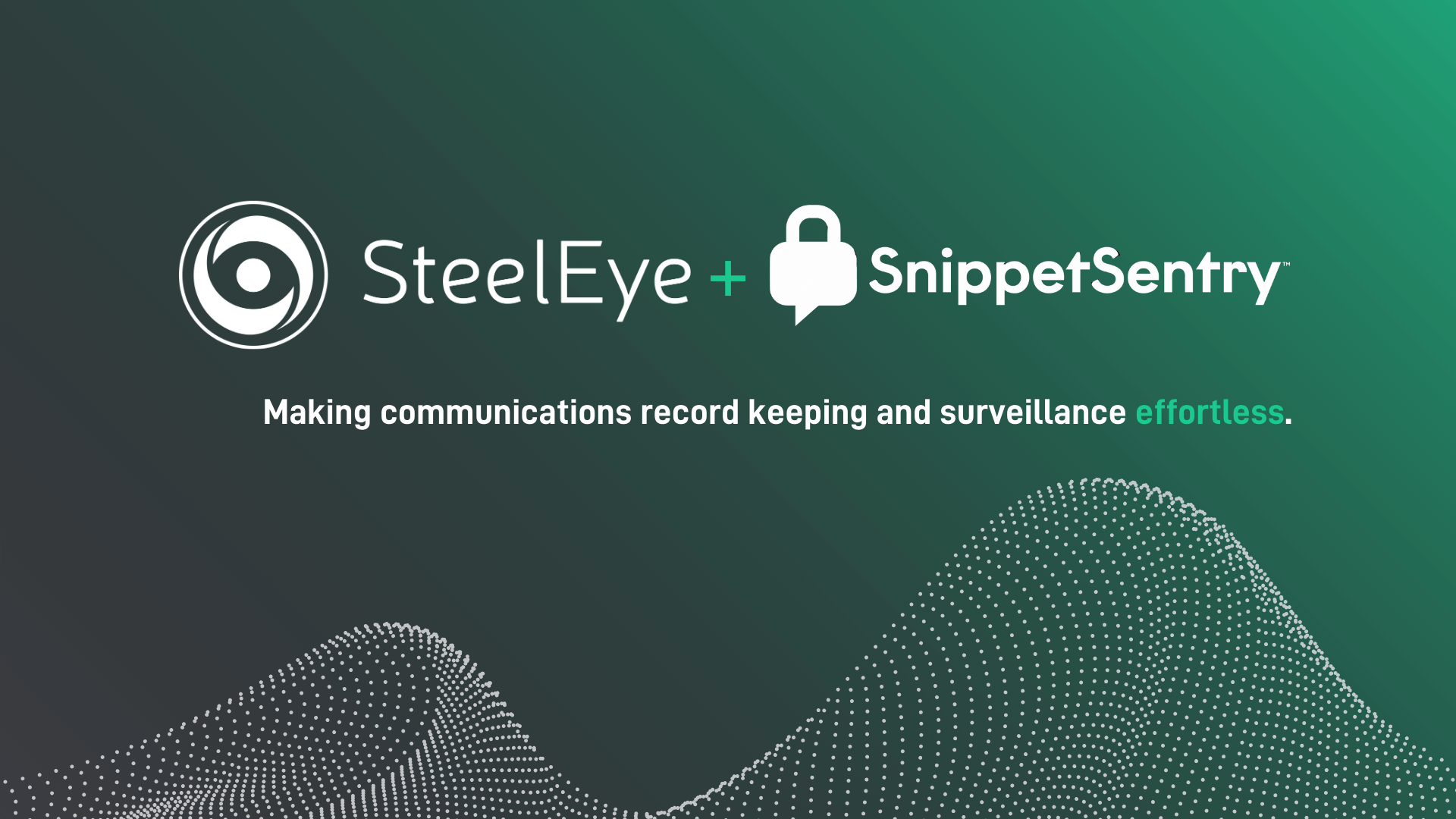As the financial markets continue to come under intense pressure due to the state of the economic climate, high trading volumes could be a catalyst for rogue traders – leaving the market wide open for potential manipulation.
In this blog, we look at the market abuse behavior known as Front Running, explore the key risks involved, and how Front Running can be detected and stopped.
Topics covered:
What is Front Running?
Front Running is a market abuse behavior, also known as pre-hedging or pre-positioning, that happens when a broker or person responsible for executing orders obtains knowledge about a forthcoming order on a financial instrument that is going to hit the market.
There is an assumption that the order will shift the price of the financial instrument, so, the individual uses this information by buying or selling either the same instrument or a derivative thereof ahead of the lawful transaction to profit from the price movement created.
The rogue trader essentially uses the privileged information for personal or loss avoidance gain, prioritizing themselves over the client.
The term “Front Running” stems from a time when client orders were physically transported between trading desks and a broker who’d caught wind of the details of a large order could literally run ahead to execute a trade before the client order went through.
The key to Front Running is the size of the order and the time period between receiving the order and making the transaction. The individual is aware of the impact the order will have on the market and carries out their own financial activities in the short time period between receiving the order and executing it on behalf of the client.
Front Running can be carried out by any trader or intermediary who executes financial activities on behalf of a client. It can be institutional, where a firm executes trades for its own account before completing buy or sell orders for a client. The majority of Front Running cases involve individual brokers or brokerage firms that are trading stock in and out of undisclosed, unmonitored accounts of relatives or collaborators.
.webp?width=790&name=SteelEye-different-types-of-front-running%20(3).webp)
What are the different types of Front Running?
-
Proprietary vs. Client - this is where a broker receives an order from a client to purchase a large number of shares and, with this knowledge, anticipates that the transaction will drive up the price of the company’s stock and therefore buys shares before executing the client’s order. Once the stock price soars, they sell their shares at the inflated price.
-
Client vs. Client - this type of Front Running is when one client Front Runs another. It is not known whether Client A was deliberately Front Running Client B - it could just be a coincidence - but should be investigated. In this form of Front Running, the broker is not involved.
-
Personal Account Dealing vs. Client - in this instance a trader has knowledge of a client order. They then use their personal account in order to Front Run the client. An example of such a case taken by the SEC sees a plaintiff being fined $500k.
Why does front running need to be detected?
Beyond it being an illegal trading practice, Front Running goes against best execution obligations and offers poor customer service. Essentially, in Front Running, the client's order is not being prioritized as the rogue trader is prioritizing his or her own financial activities first.

What are the consequences of Front Running?
There are serious consequences for individuals and firms if found guilty of Front Running, as seen by multiple high-profile cases recently that included large fines and lengthy prison sentences.
For firms, Front Running exposes significant financial, operational, and reputational risk if the activity is detected by regulators. Regulators are increasing their pressure on firms to ensure market abuse, like Front Running, doesn’t occur, and are handing out heavy penalties for non-compliance.
For individuals, being prosecuted for Front Running can be life-changing with potential jail time and large fines. The SEC has recently been engaged in various court proceedings, clamping down on cases of Front Running abuse, including charging a quantitative analyst for perpetrating a years-long Front Running scheme that generated illicit profits of at least $8.5 million.
Meanwhile, a tier one bank was involved in an elongated case involving an employee charged and sent to jail for two years for their part in Front Running schemes. The banking giant was forced to pay tens of millions to the affected firm. However, in late 2021, the same bank won a case against claims of widespread historical Front Running, largely down to time limitation issues in the case, and received compensation in legal fees.

What are the regulations for Front Running?
As with most financial regulations, there are varied approaches in different regions. In the US, the CFTC, FINRA, and SEC enforce Front Running compliance. In the UK and Europe, the FCA and ESMA set out the rules which prohibit this market abuse behavior.
US
|
UK
|
|
FINRA Rule 5270
Classifies Front Running as an illegal act. The rule outlines the exact definition and what the market abuse behavior entails.
|
FCA MAR 1.3
Defines Front Running as a form of insider dealing and states that it is illegal and prohibited.
|
|
SEC Code of Ethics (Rule 17j-1) section D
Section D states that Front Running is illegal and prohibited.
|
ESMA 2020 MAR Review Report
Article 7(1)(d) states that Front Running is a form of market abuse.
|
|
CFTC Sec. 37.203(a)
Classifies Front Running as a prohibited abusive trading activity.
|
|
.webp?width=790&name=SteelEye-different-types-of-front-running%20(2).webp)
How to detect and monitor for Front Running
Tackling market abuse is a high priority for financial firms, especially as some traders continue to work in remote environments as a result of the Covid-19 pandemic. As highlighted in the FCA's Market Watch 69, this opens the door for more market abuse to occur, as firms are at greater risk of exposure due to limited visibility. An example of this made headlines recently when a tier one bank was fined £12.6M for failures in their surveillance obligations.
These unforeseen circumstances have made it crucial to have robust trade surveillance programs in place to monitor for and detect Front Running. Tailored algorithms and proactive monitoring should all be part of a firm's toolkit for combating market abuse. Whistleblower policies are also important for rooting out rogue traders.
To spot any potential Front Running, firms should look out for proprietary buy/sell orders that happen in close proximity to a client buy/sell order in the same instrument that impacted the share price. To do this, firms can use algorithms that analyze a range of data, such as market data, news, client identifiers, order timestamps, canceled orders, and execution venue information. This is key since the detection of Front Running requires the analysis of the following data points in close succession:
-
The Front Runner’s purchase/sale of a financial instrument;
-
the legitimate transaction; and
-
potentially, the Front Runner’s unwinding of the financial instrument to complete the cycle.
Connecting these dots and demonstrating a clear timestamped path can uncover Front Running.
Trade reconstruction tools are also helpful once a Front Running alert has been triggered. These tools can help compliance teams investigate potential instances of Front Running by connecting contextual data, such as voice and electronic communications, to the trading activity.

As markets continue to evolve and regulators intensify their scrutiny of market abuse rules, it is more important than ever that firms have effective procedures in place to detect activities like Front Running.
All firms that execute on client orders, where there is a risk of information leakage, should be monitoring for this behavior. This can be effectively done through trade surveillance technology and algorithms that look for large orders placed ‘x’ minutes before a large client order, along with other characteristics of this abuse. Trade reconstruction tools are thereafter valuable in assisting compliance teams in investigating potentially flagged trades.
In an era of high-frequency and algorithmic trading, compliance teams must be faster than ever to respond to potential market abuse, and this requires sophisticated trade surveillance. The good news is that SteelEye’s 2022 State of Compliance Report revealed that 46% of compliance teams view trade surveillance as one of their top two investment priorities for the year ahead.
How does SteelEye help firms to combat Front Running?
SteelEye's asset class agnostic Trade Surveillance solution brings together trade and order data on a single platform, complementing it with market data, news, and social media sources before presenting it back in a meaningful way.
The platform offers a range of intelligent trade surveillance tools, covering a wide range of market abuse activities and behaviors so that clients can proactively monitor, prevent, and mitigate market abuse risk.
SteelEye's Front Running algorithms include Prop vs. Client, Client vs. Client, Desk vs. Desk, and Personal Account Dealing vs. Client.
With SteelEye's fully audited case manager firms can effectively track and monitor their work queues, carry out market abuse investigations, and swiftly respond to regulatory requests.
EXPLORE OUR TRADE Surveillance SOLUTIONS


.webp?width=790&name=SteelEye-different-types-of-front-running%20(3).webp)


.webp?width=790&name=SteelEye-different-types-of-front-running%20(2).webp)







